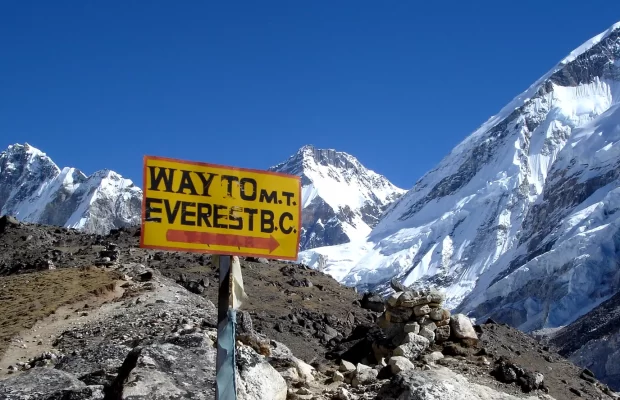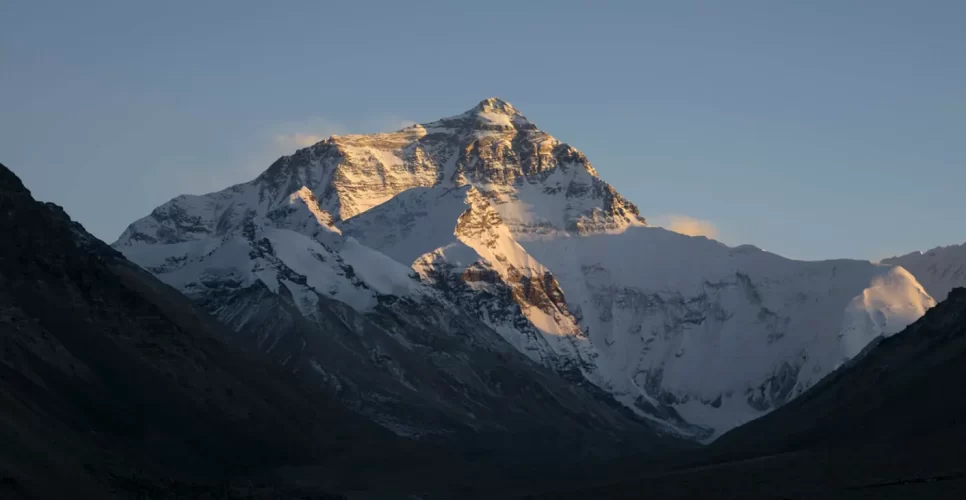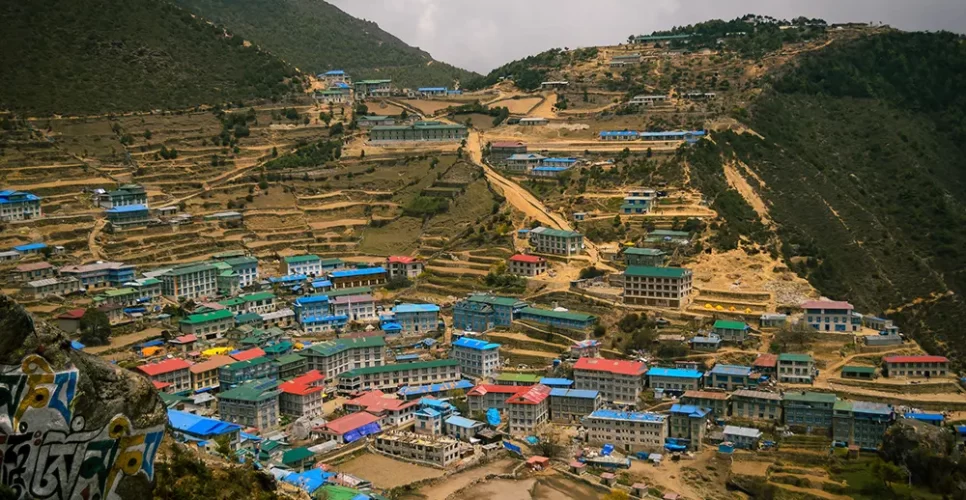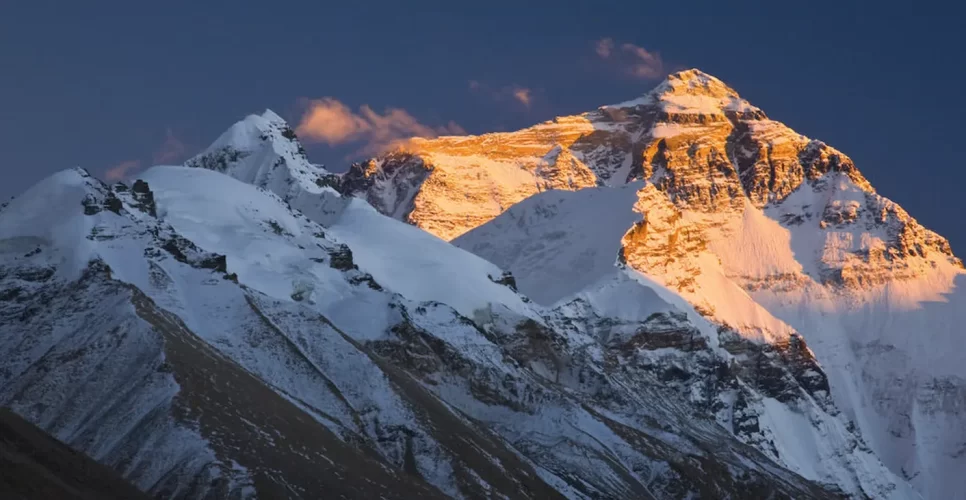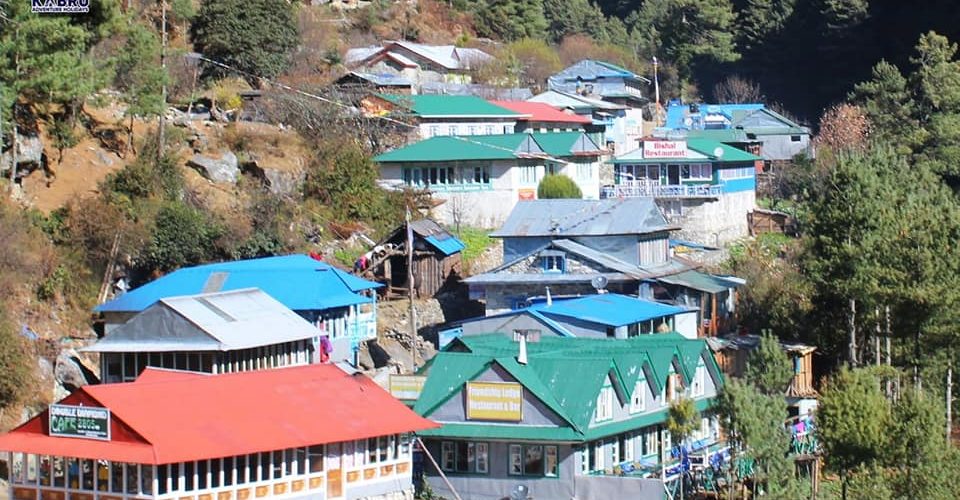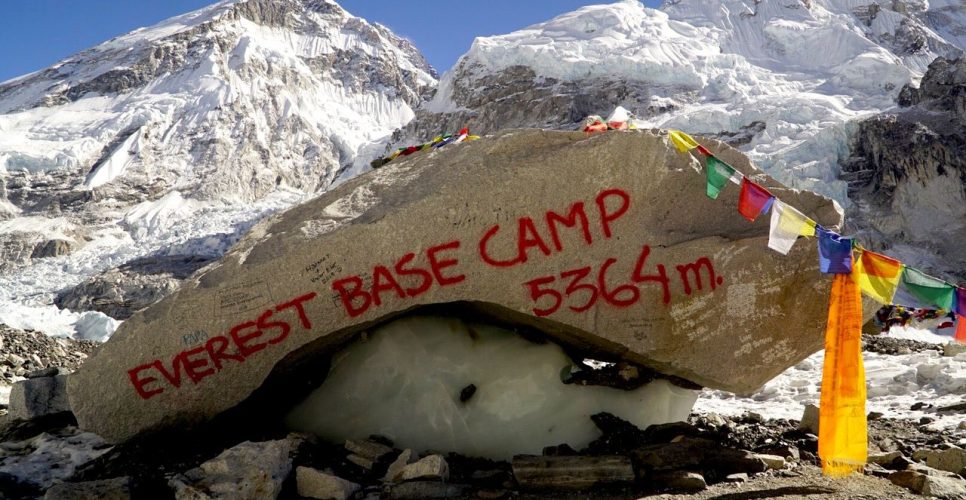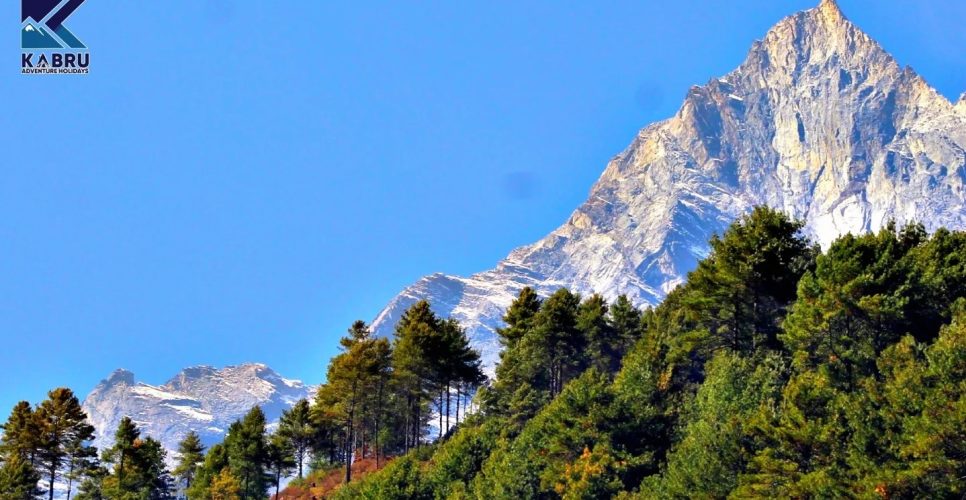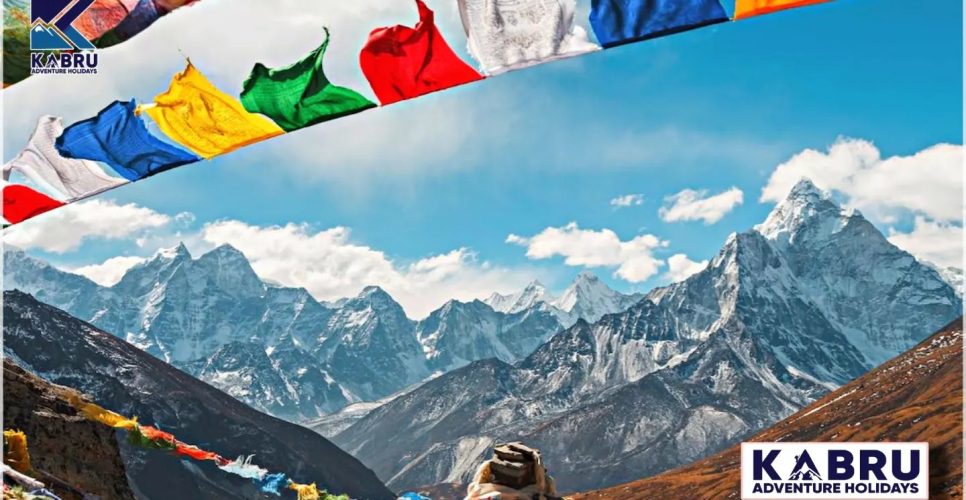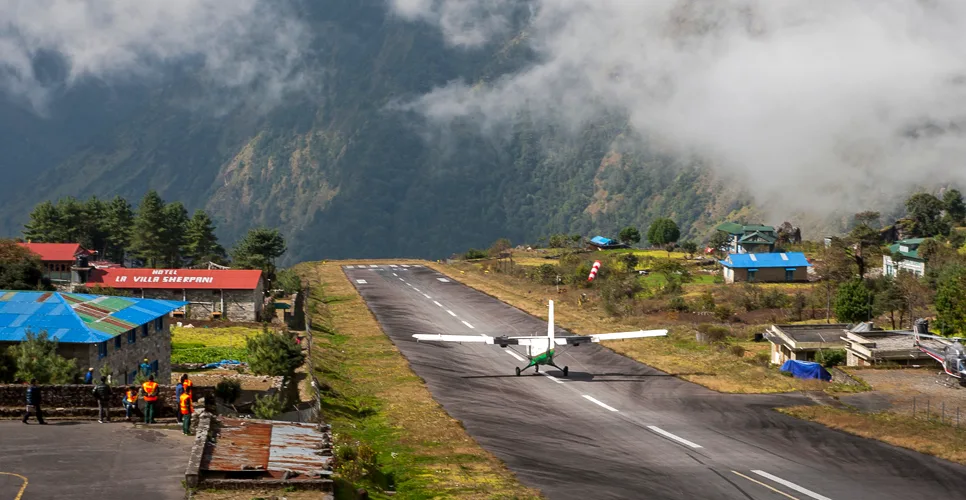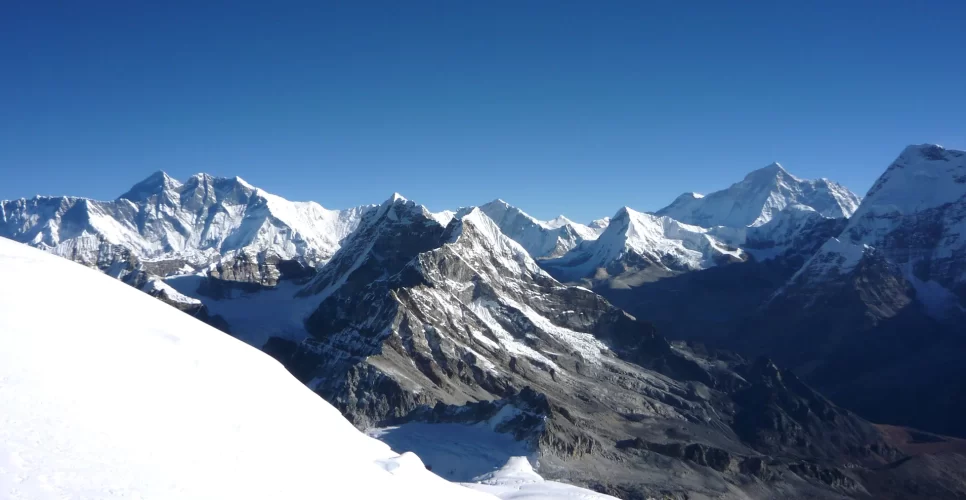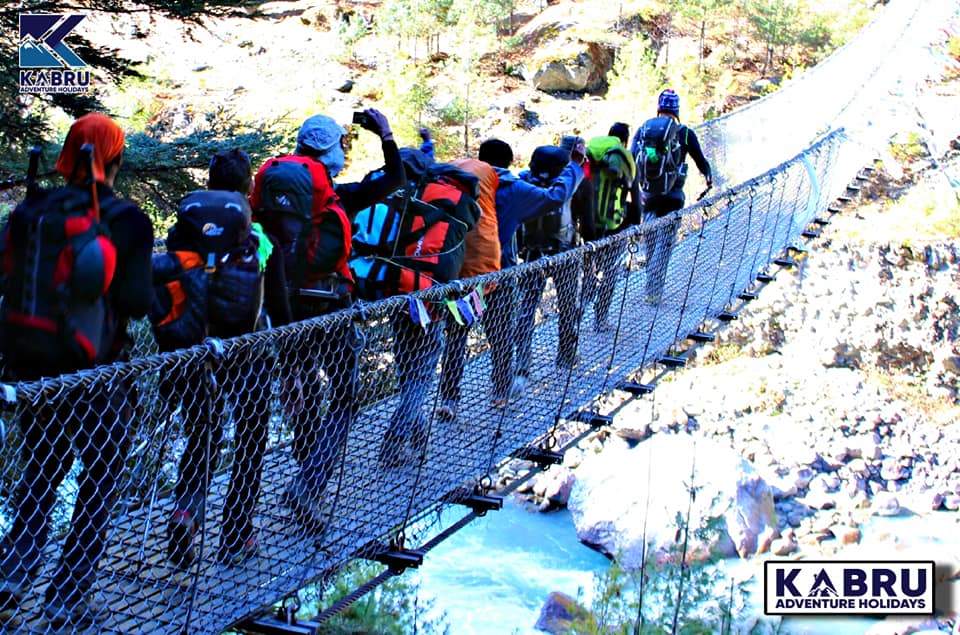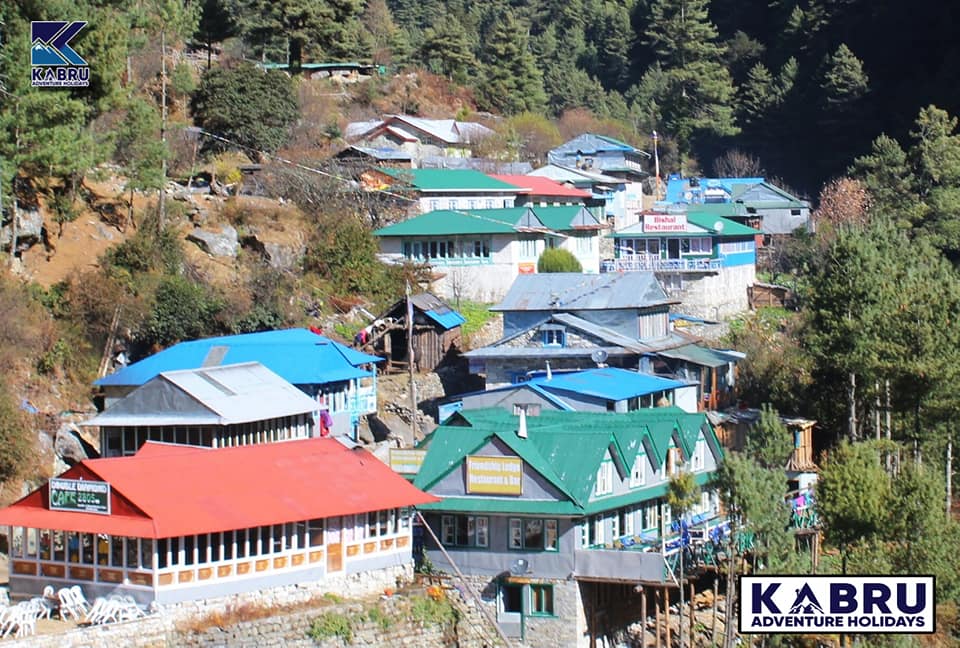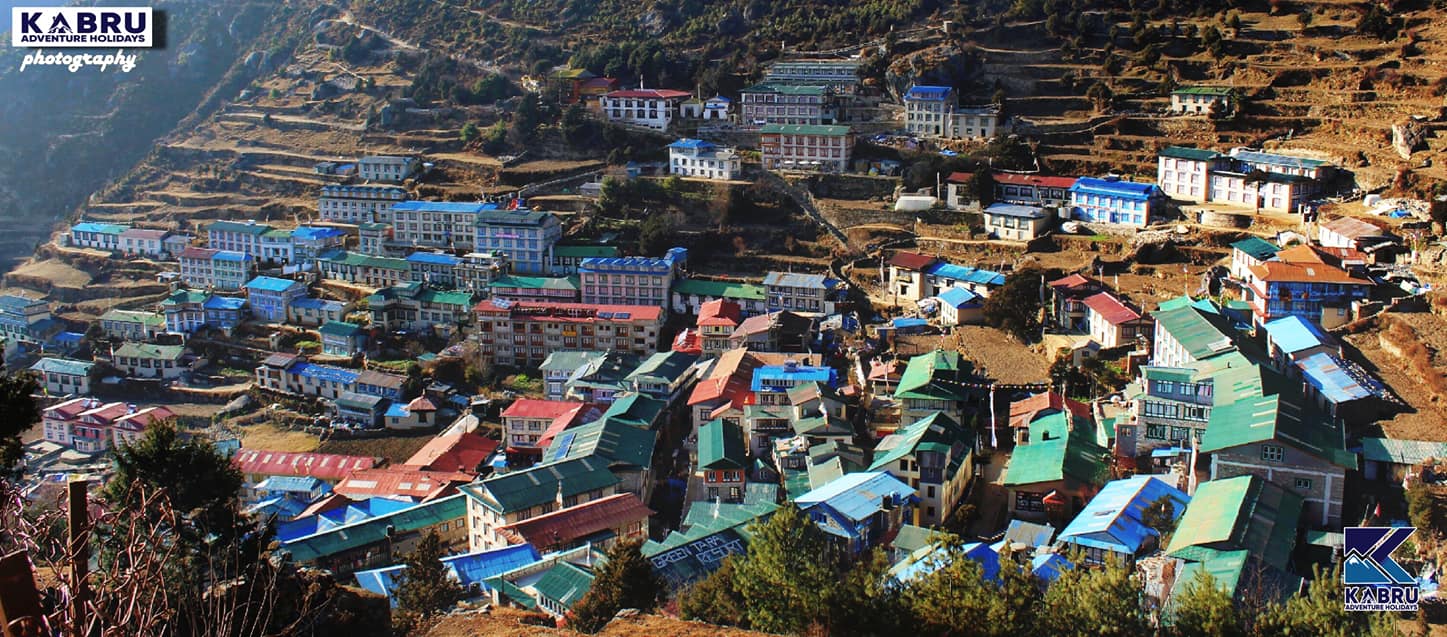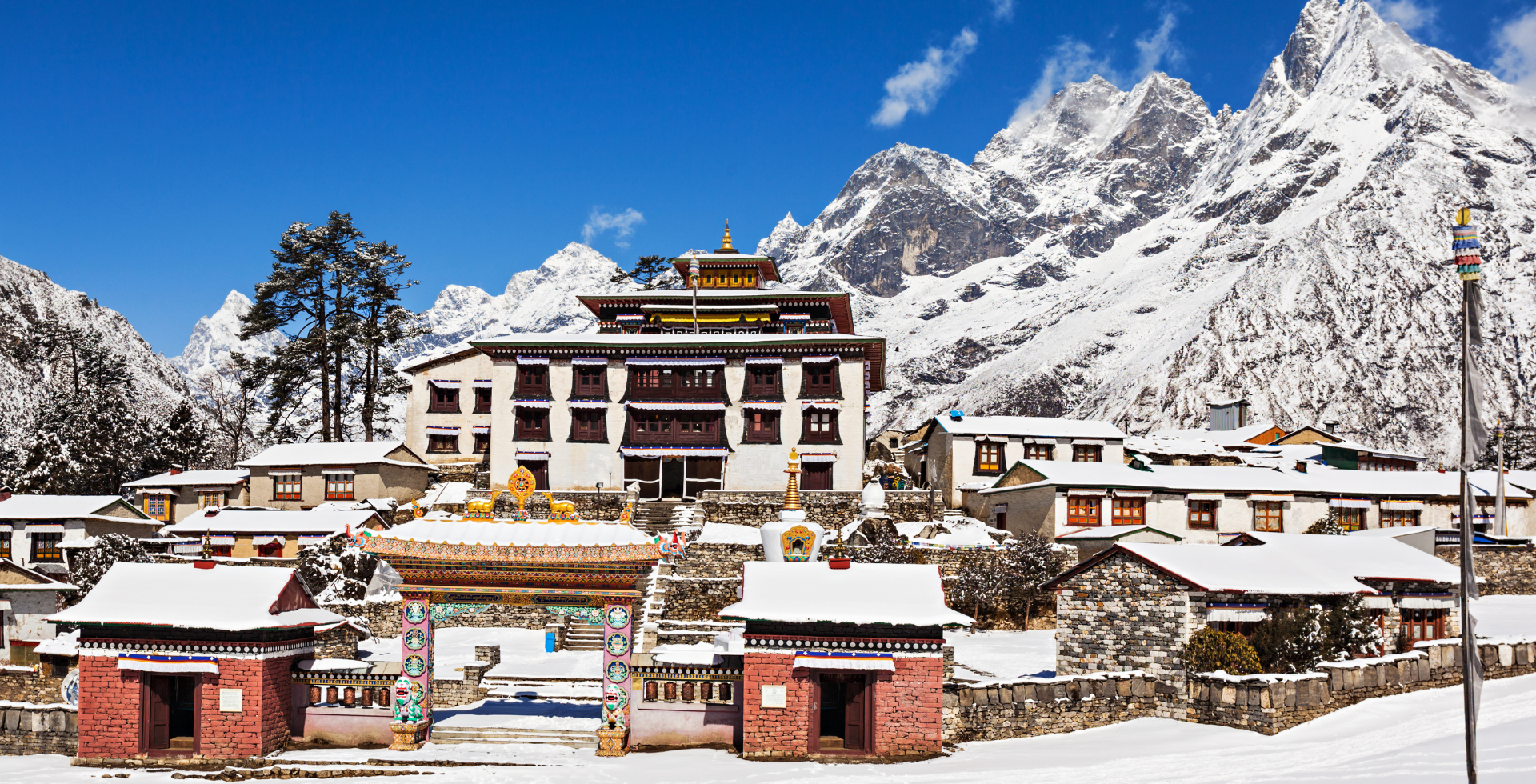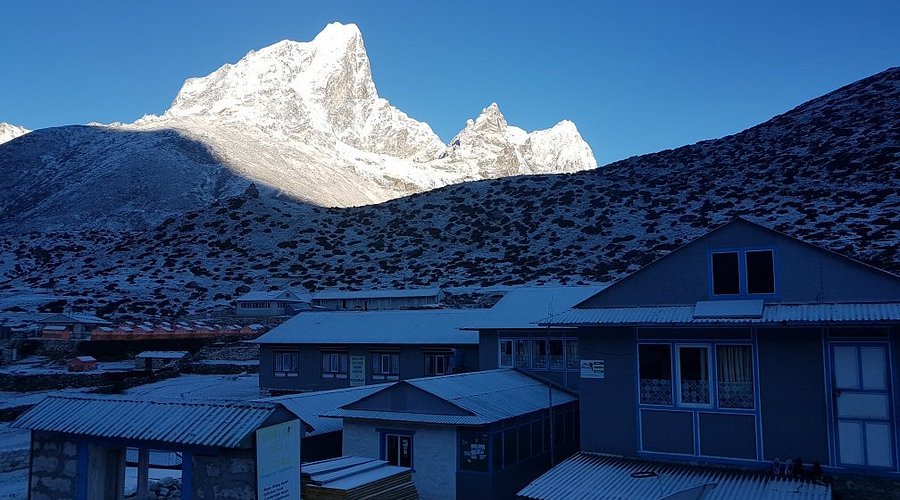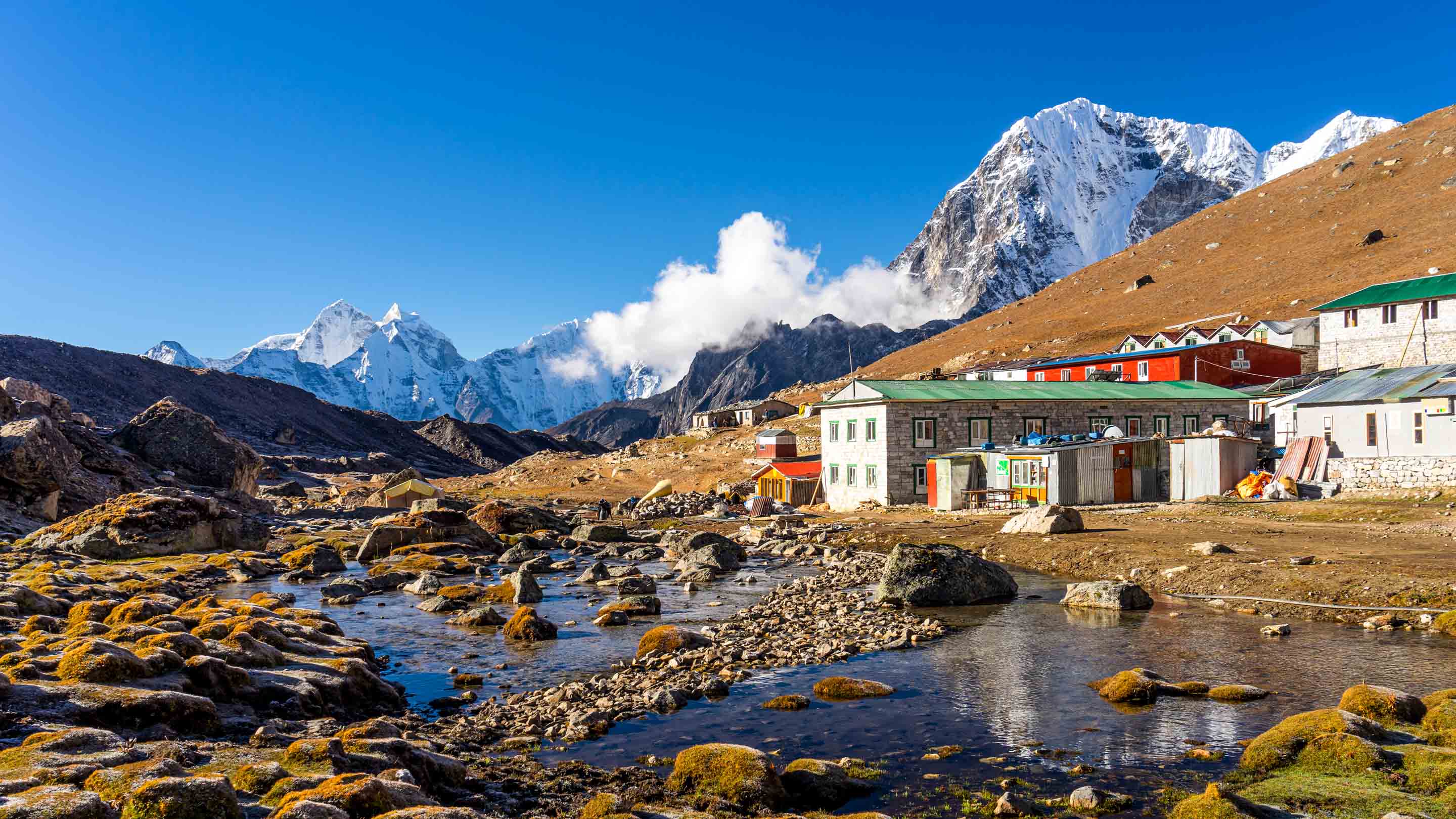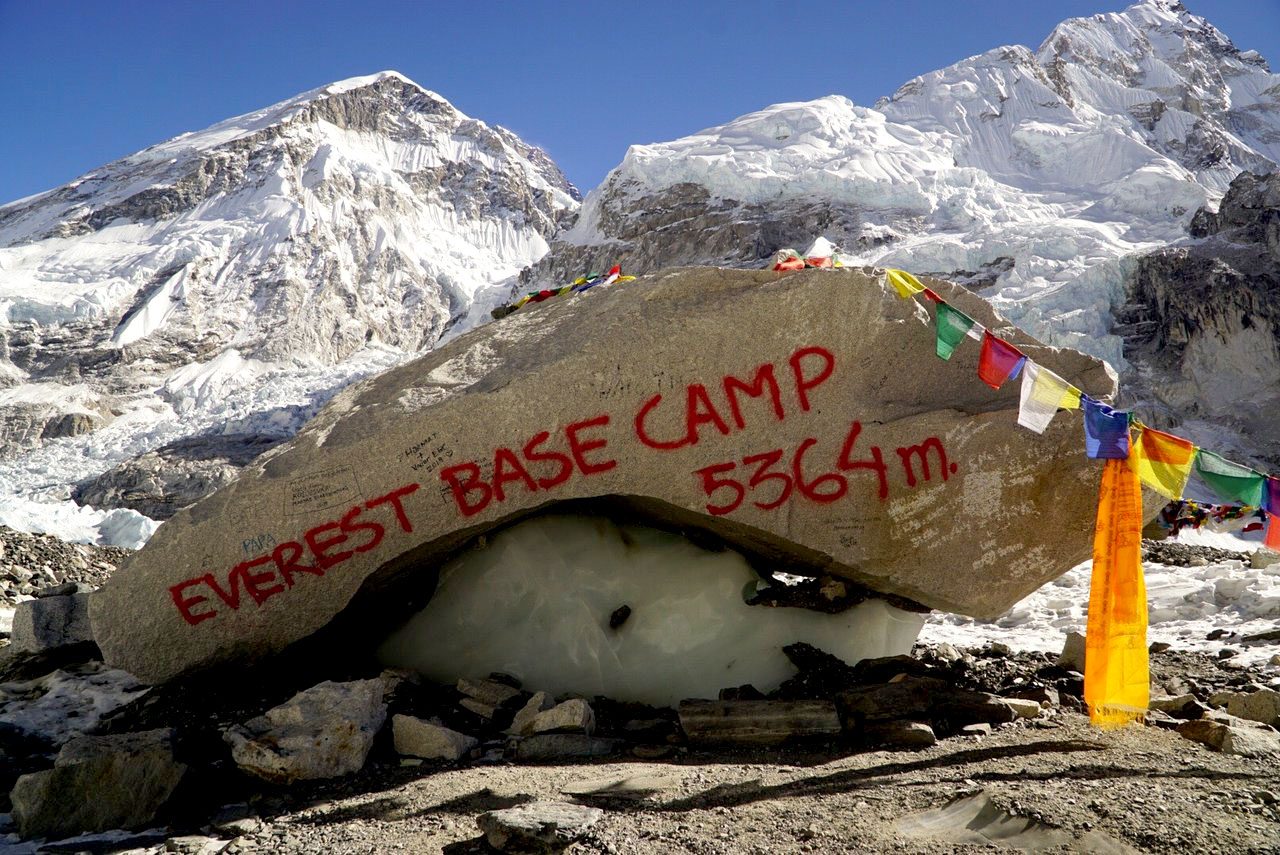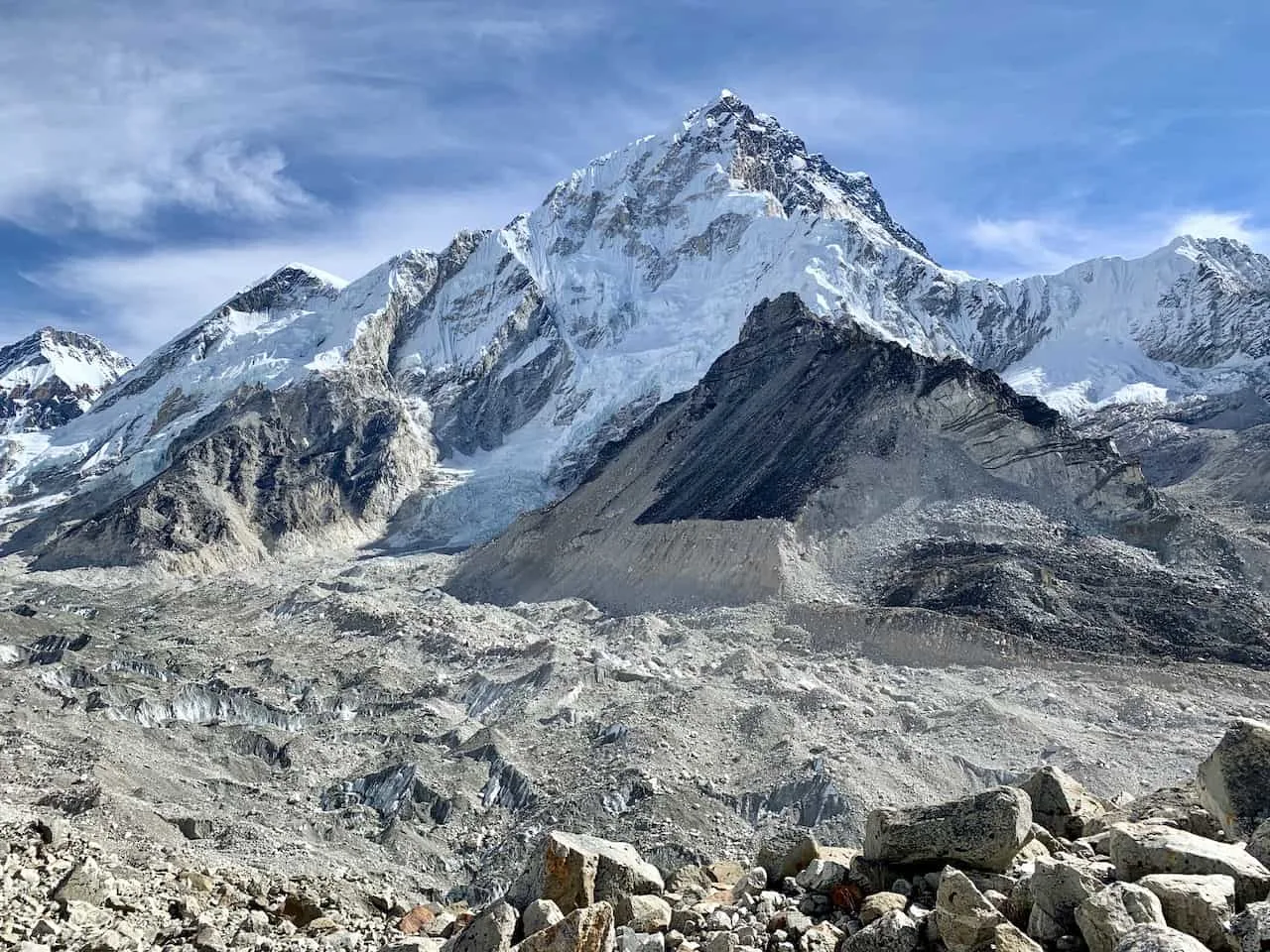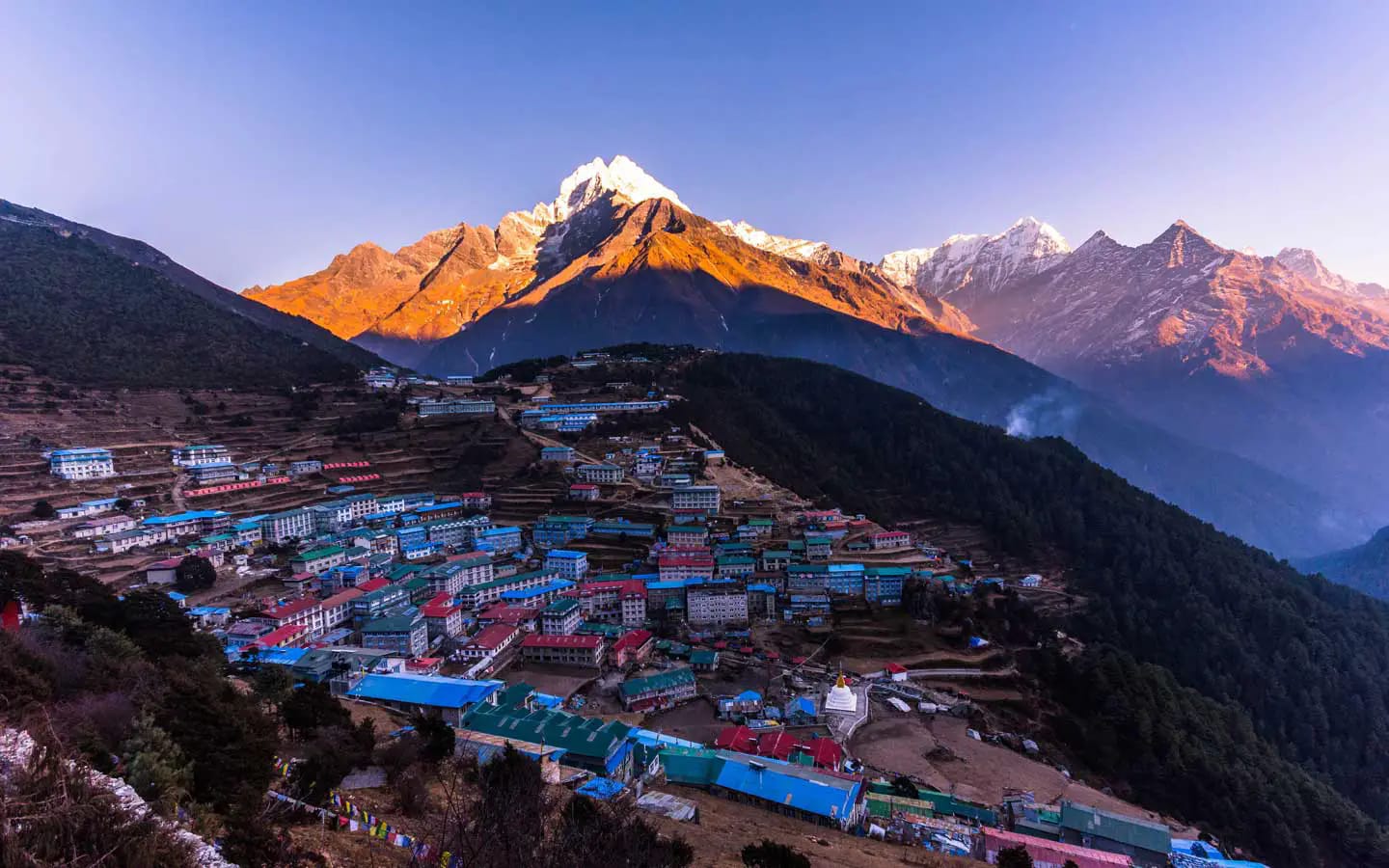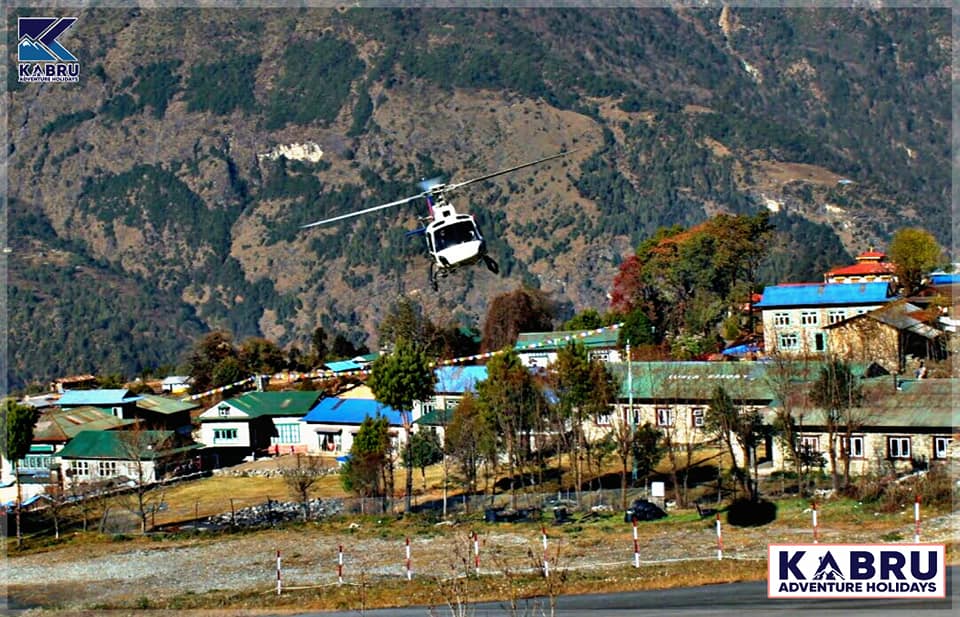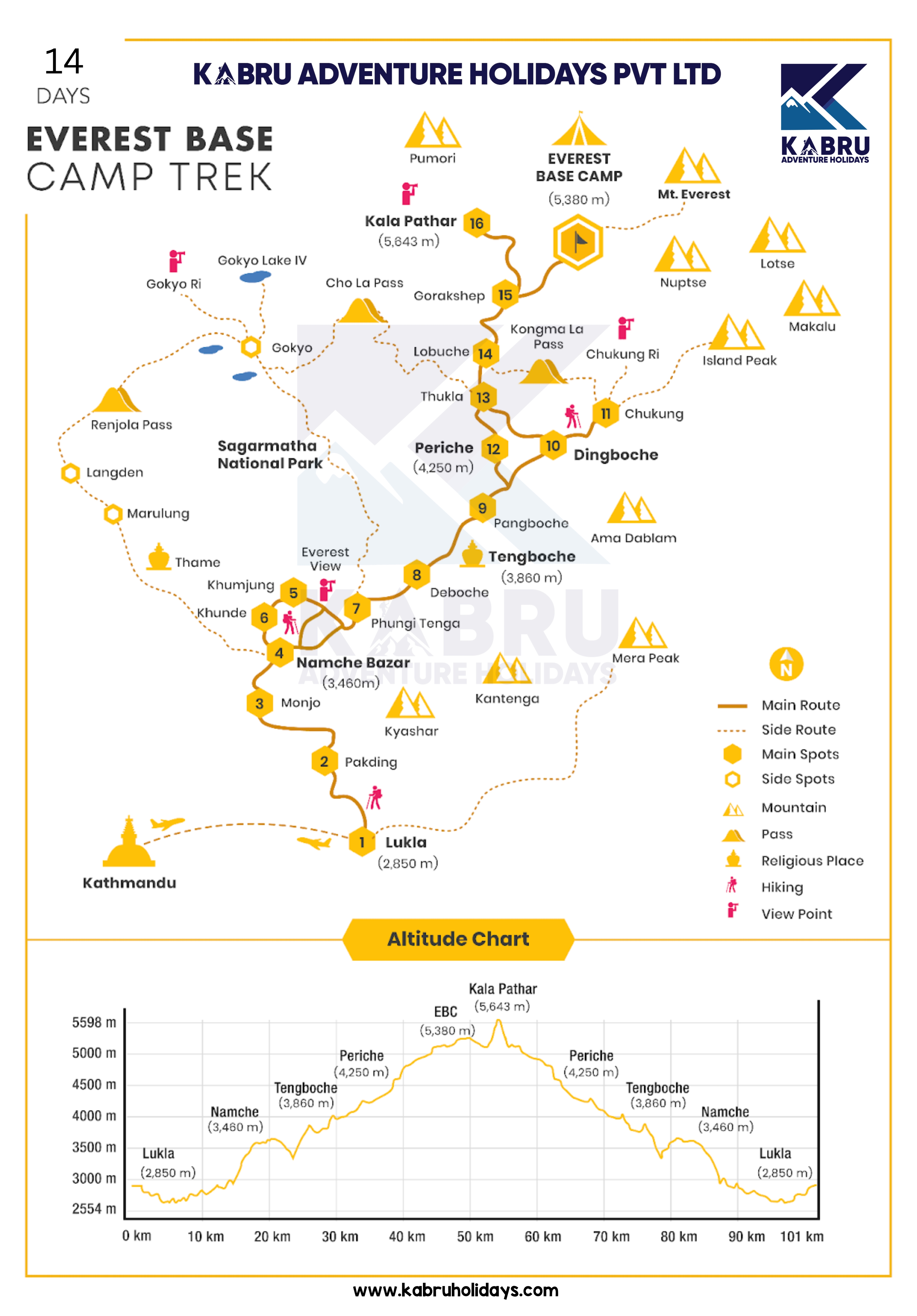Everest Base Camp Trek




 Based on
Based on
Group Discounts |
|
| 2-4 Pax. | US$ 1450 PP |
|---|---|
| 5-7 Pax. | US$ 1400 PP |
| 8-10 Pax. | US$ 1350 PP |
| 11-14 Pax. | US$ 1300 PP |
| Over 15 Pax. | US$ 1199 PP |
Highlights of Everest Base Camp Trekking
- Whether you’re a novice or a seasoned trekker, this trail is ideal for everyone’s hiking needs and abilities. Perfect for all hikers, from amateurs to experts!
- You can participate in various outdoor experiences, from hiking and camping to mountaineering.
- Magnetic view of Everest and encompassing mountains
- Indulge in the beauty of the sunrise over the Himalayan range, take a journey through fascinating forests, cross high mountain passes, and camp near Mt. Everest for an unforgettable experience!
- Immerse yourself within the Sherpa culture and way of life, a remarkable journey that will open your eyes to a unique outlook. It’s an exceptional experience, as you get to experience their culture directly.
Most Asked Questions by Travellers
Yes, the Everest Base Camp trek is suitable for beginners with a reasonable level of fitness. Although it is a physically demanding trek due to high altitudes, proper acclimatization and a steady pace will help you reach the base camp. It’s essential to train and prepare your body for the trek in advance.
There is no strict age limit for the Everest Base Camp trek, but it’s recommended for adults between 12 and 65 years old. However, age is not a barrier if you’re in good health, physically fit, and have prior trekking experience or proper guidance. We recommend consulting a doctor before embarking on the trek, especially if you are older or have any health concerns.
Yes, you will need two main permits for the Everest Base Camp trek:
- Sagarmatha National Park Permit: This is required to enter the national park and is available in Lukla or Kathmandu.
- TIMS (Trekkers’ Information Management System) Card: This helps with the registration and tracking of trekkers for safety reasons. Kabru Adventure Holidays will assist in obtaining these permits for you.
While the Everest Base Camp trek is not overly technical, the primary risks are altitude sickness and harsh weather conditions. With proper acclimatization, preparation, and by following safety guidelines, the trek can be completed safely. Always trek with a guide and stay hydrated to reduce risks.
The Everest Base Camp trek is more accessible and has a more straightforward route, making it ideal for those who want to see Mount Everest up close without venturing into more challenging terrain. If you want to experience the grandeur of Everest, its surrounding peaks, and the Sherpa culture with less strenuous hiking, the EBC trek is the better choice.
The standard duration for the Everest Base Camp trek is 12-14 days, depending on the itinerary, pace, and acclimatization days. This allows you to trek from Kathmandu to Lukla, pass through Sherpa villages, acclimatize, and reach Everest Base Camp while ensuring safety and comfort.
The cost of the Everest Base Camp trek varies depending on the level of service and type of trek package. On average, a standard 12-day trek can cost between $1,200 to $2,500 USD, including permits, accommodations, food, guide, porter, and other logistical services. Luxury options may be higher, offering premium accommodations and amenities.
Yes, snow is common on the Everest Base Camp route, especially during winter (November to February) and the colder months of autumn and spring. The weather conditions can change rapidly, so it’s essential to be prepared for snow and cold temperatures along the trail.
Yes, most teahouses along the trekking route have charging facilities. However, there may be a small fee for using charging stations, especially as you go higher up the mountain. It’s advisable to bring a portable power bank to ensure you have backup charging options.
Wi-Fi is available at certain teahouses along the trekking route, particularly in popular stopping points like Namche Bazaar, Tengboche, and Gorakshep. However, the connection may be slow, and you may need to pay for access. It’s not reliable at higher altitudes, so it’s best to limit your internet use to conserve battery and avoid reliance on connectivity.



